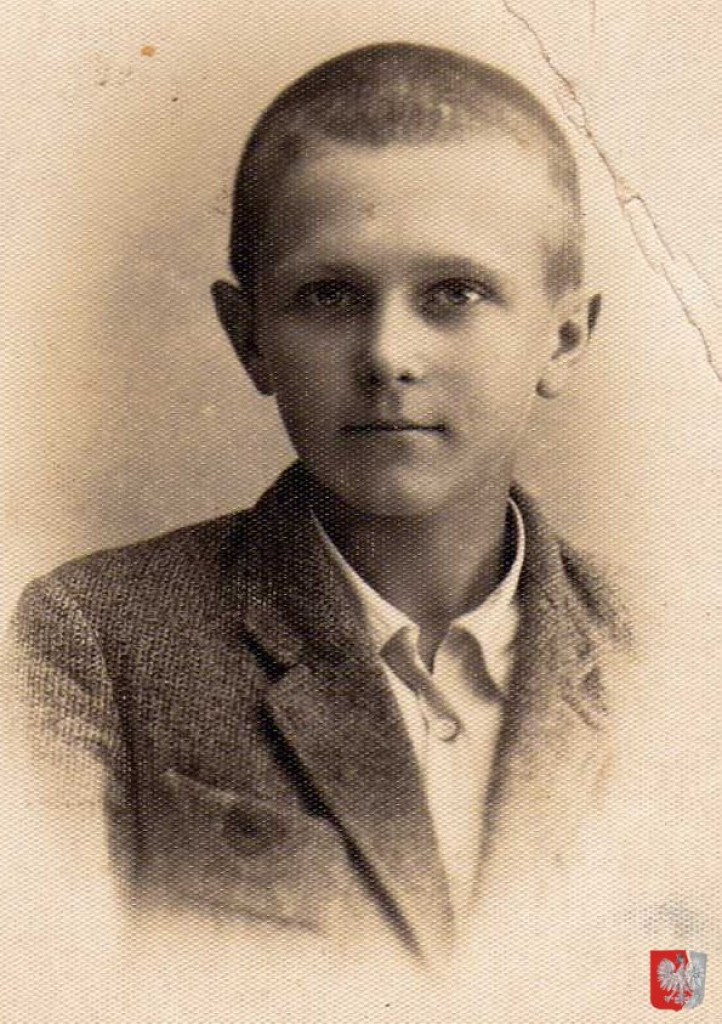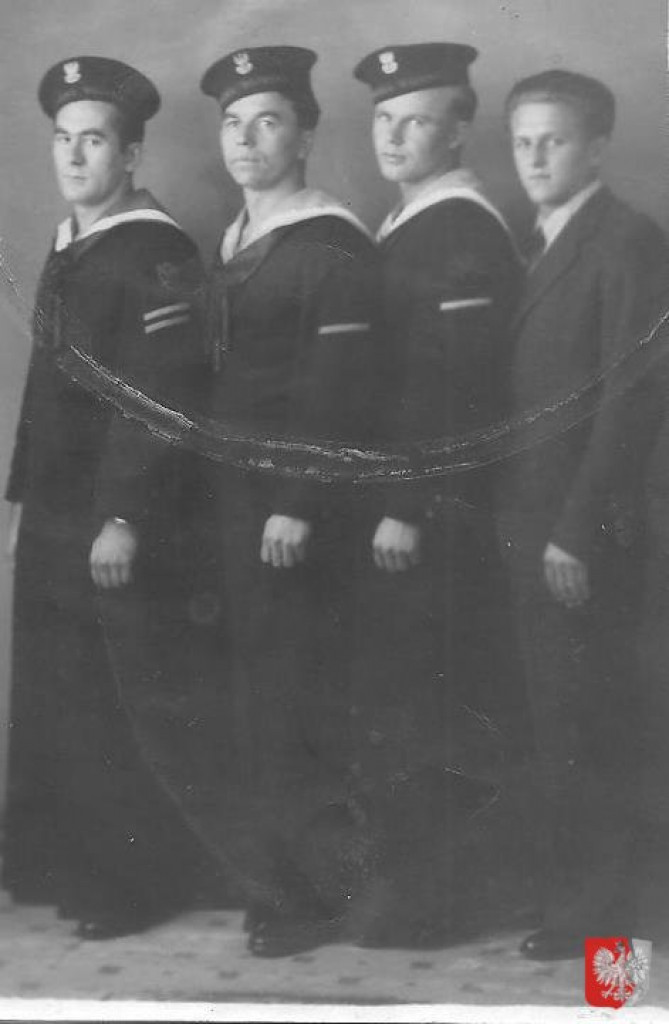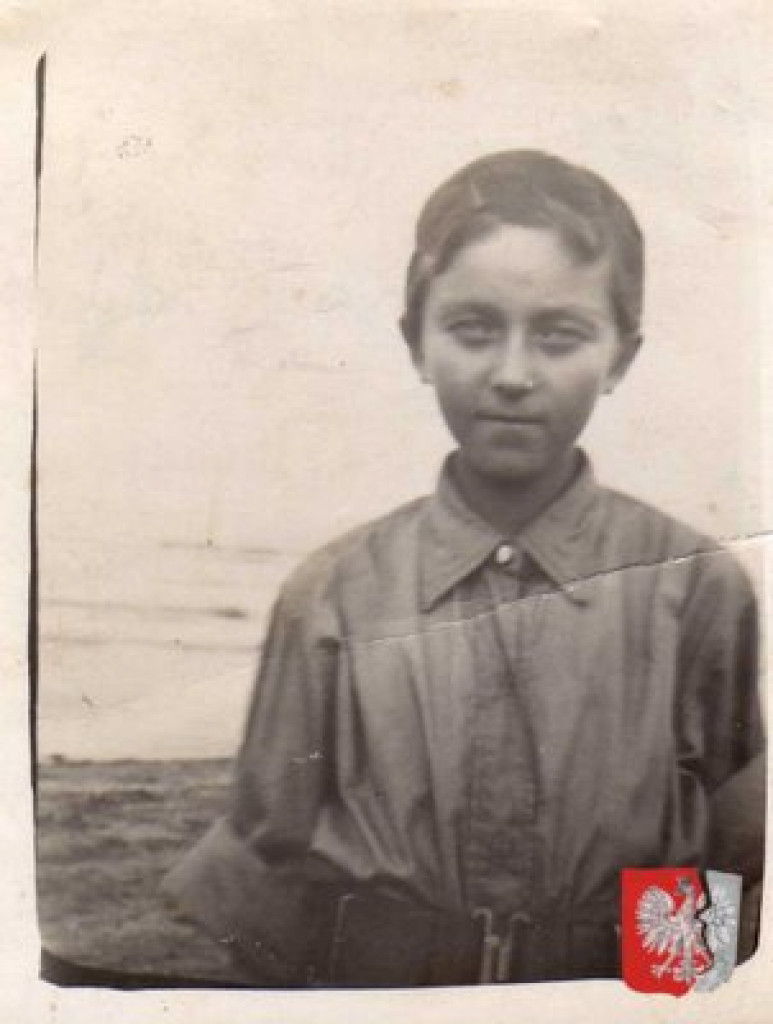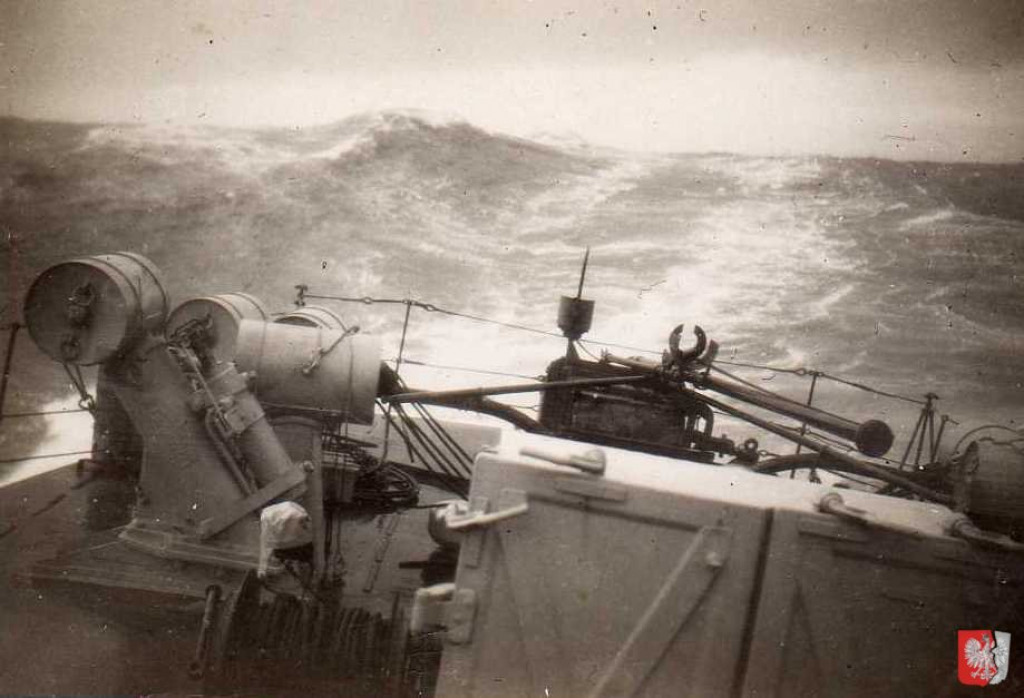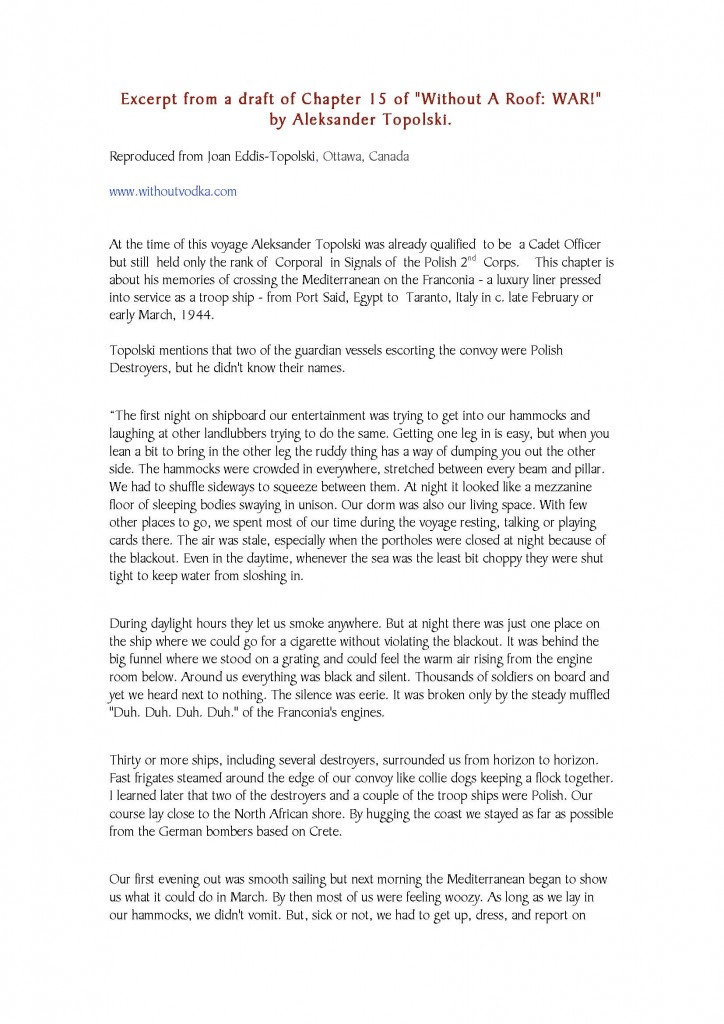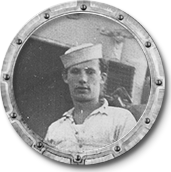
Polish Naval Memories of WWII
From the end of December 1943 these two Polish destroyers took part in the escort of the troopships carrying the Polish 2nd Corps from North Africa & Egypt to Italy. This 60,000 strong corps, consisting of two infantry divisions and an armoured brigade, comprised some of the over one hundred thousand Poles released by the Soviets in 1941 from their Gulags. Elements of the 3rd Carpathian Rifle Division began landing at Taranto on 21st December 1943. Some of the troops sailed on board the Polish M/S Batory, escorted by the Polish destroyers and also submarines. The transfer of all Polish units from Egypt and the Middle East continued until the middle of April 1944. These troops landed at the Italian ports of Taranto, Bari and Naples which had been captured by the Allies.
Janek Stępek recalled that in Bari the food was lovely. One night in Bari the air raid sirens sounded; a German air force attack which destroyed the whole port. Janek was shaking on deck. He said it was cold but a fellow Polish sailor said it wasn’t cold – it was fear. ORP Krakowiak left port as quickly as possible, as the port was already burning. Janek also recalled that the ship’s crew were only Poles but they never discussed what had happened to them in Poland. However emotions showed every time the national anthem was played. This broke through the barriers to emotion.
“From the middle of December, 1943, until May, 1944, Polish soldiers were sent by truck to ports in Alexandria, Port Said and Suez, where they boarded transport ships bound for the Southern Italian ports of Taranto, Bari, Brindisi and Naples.
The privilege of being the first unit to reach Italian soil was given to the 3rd Carpathian Division of Carpathian Rifles, which included many veterans of the Independent Carpathian Brigade, who fought at Tobruk. The Division landed at Taranto on December 21st, preceded only by a detachment of Polish Commandos. It was followed by the Corps Headquarters, the 5th Infantry Division and the newly formed 2nd Armoured Brigade, which arrived successively between January and May. General Anders arrived on February 6th, with the first detachment of the 5th Infantry Division. The sea journey from Egypt to Italy was uneventful as the Allied navy and air forces had full control over the Eastern Mediterranean and the risk of a submarine or air attack was almost non-existent. The soldiers celebrated Christmas, even though many found it strange to do so aboard a ship. For those who were religious it was symbolic that they had arrived in Iran at Eastern and left Palestine for Egypt and Italy at Christmas time.
Those soldiers who had come from the USSR could not help comparing their trip across the Mediterranean with their crossing of the Caspian Sea, in 1942. They were now moving as an army and not as a group of refugees and there were no women and children aboard (apart from the nurses and ATS). All non-combatants had been left behind, in schools, hospitals and shelters in Palestine and Egypt. Leaving loved ones behind in Palestine was a lot different than leaving them in the Soviet Union…
Veterans who had served in the Carpathian Brigade and had not been in Russia had a different experience in their earlier sea travel. The last time they boarded transport ships in Egypt their destination was Greece, but at sea the ships changed course and headed for Libya, as Greece had fallen to the Nazis.”
Source: General Anders and the soldiers of the Second Polish Corps by Harvey Sarner

